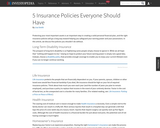
Article describes different types of insurance and the benefits they provide
- Subject:
- Business and Information Technology
- Career and Technical Education
- Material Type:
- Reading
- Reference Material
- Author:
- Lisa Smith
- Date Added:
- 05/30/2018

Article describes different types of insurance and the benefits they provide
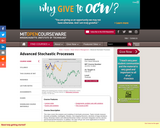
This class covers the analysis and modeling of stochastic processes. Topics include measure theoretic probability, martingales, filtration, and stopping theorems, elements of large deviations theory, Brownian motion and reflected Brownian motion, stochastic integration and Ito calculus and functional limit theorems. In addition, the class will go over some applications to finance theory, insurance, queueing and inventory models.
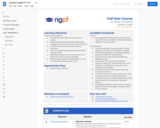
In this 100-minute lesson, students will be able to:
-Describe the main types of auto insurance policies
-Explain the relationship between deductibles, coverage limits, and premiums for auto insurance
-List factors that determine auto insurance premiums
-Determine legally required and recommended coverage levels
-Read the fine print of an insurance policy and determine what coverage is provided
-Identify steps to take immediately after an auto accident and successfully file a claim
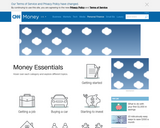
Great entry level resource to a large variety of financial literacy documents ranging from investing to buying a car to starting a family (and more!).
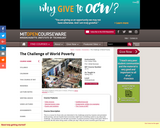
This is a course for those who are interested in the challenge posed by massive and persistent world poverty, and are hopeful that economists might have something useful to say about this challenge. The questions we will take up include: Is extreme poverty a thing of the past? What is economic life like when living under a dollar per day? Why do some countries grow fast and others fall further behind? Does growth help the poor? Are famines unavoidable? How can we end child labor - or should we? How do we make schools work for poor citizens? How do we deal with the disease burden? Is micro finance invaluable or overrated? Without property rights, is life destined to be "nasty, brutish and short"? Has globalization been good to the poor? Should we leave economic development to the market? Should we leave economic development to non-governmental organizations (NGOs)? Does foreign aid help or hinder? Where is the best place to intervene?

This 4-minute video lesson looks at the market value of assets. [Core Finance playlist: Lesson 117 of 184]

In this 80-minute lesson, students will be able to:
-Understand how millions of Americans get their health insurance
-Explain the pros and cons of opting into your employer health plan versus buying your own
-Read the fine print on a health benefits form and shop around for a health insurance plan that works for you
-Determine what steps you can take if you are faced with expensive medical bills
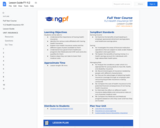
In this 95-minute lesson, students will be able to:
-Understand the importance of having health insurance
-Identify the various costs affiliated with having health insurance
-Explain how health insurance works and the different types of plans available to them
-Understand how government healthcare programs like Medicaid and CHIP work and who qualifies for them
-Explore steps they can take to lower their medical costs
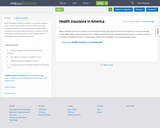
Basics of health insurance in America are covered including major types of insurance for Americans and cost sharing (copay, deductibles, coinsurance)practices. Students will calculate out-of-pocket payments given a common scenario. The history of health insurance is summarized. Videos are embedded in this prepared power point.
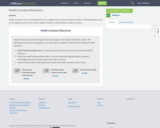
Health insurance can be confusing and hard to navigate in the complex healthcare system. The following resources can be applied to your lesson plan to support students understanding of health insurance.
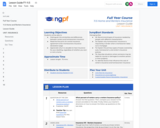
In this 75-minute lesson, students will be able to:
-Distinguish the similarities and differences between renters and homeowners insurance
-Read the fine print of a rental insurance agreement and a homeowners insurance declaration page
-Appreciate why it is valuable to have insurance for your dwelling, regardless of whether you own or rent a home
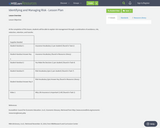
Lesson Objective: At the completion of this lesson, students will be able to explain risk management through a combination of avoidance, risk, reduction, retention, and transfer. Supplies NeededStudent Handout 1 Insurance Vocabulary (1 per student) (found in Task 2) Student Handout Answer Key1Insurance Vocabulary (found in Resource Library) Student Handout 2 You Make the Decision (1 per student) (found in Task 4) Student Handout 5 Risk Vocabulary Quiz (1 per student) (found in Task 7) Student Handout Answer Key 5 Risk Vocabulary Quiz Answer Key (found in Resource Library) Video 1 Why Life Insurance is Important (1:49) (found in Task 1) ReferencesEconedlink: Council for Economic Education. (n.d.). Economic Glossary. Retrieved from http://www.econedlink.org/economic-resources/glossary.phpMBA dictionary. (n.d.). Retrieved November 15, 2014, from MBAResearch and Curriculum CenterShutterstock. (n.d.) Photos. Retrieved from http://www.shutterstock.com/
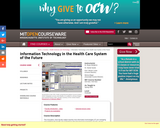
"This innovative, trans-faculty subject teaches how information technologies (IT) are reshaping and redefining the health care marketplace through improved economies of scale, greater technical efficiencies in the delivery of care to patients, advanced tools for patient education and self-care, network integrated decision support tools for clinicians, and the emergence of e-commerce in health care. Student tutorials provide an opportunity for interactive discussion. Interdisciplinary project teams comprised of Harvard and MIT graduate students in medicine, business, law, education, engineering, computer science, public health, and government collaborate to design innovative IT applications. Projects are presented during the final class. ĺĘ Starting in Spring 2010, this course will be titled Enabling Technology Innovation in Healthcare and the Life Sciences."

Article describes the concept of insurance, the benefits it provides and insurance terminology

In this 85-minute lesson, students will be able to:
-Explain the fundamental ways that insurance companies provide coverage but also make money as a business
-Recognize the relationship between insurance premiums, deductibles, and coverage limits
-Determine the role of states in providing, regulating, and enforcing insurance requirements
-Acknowledge the costs of insurance fraud
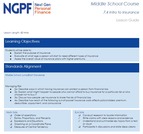
In this 60-minute lesson, students will be able to:
- Explain the purpose of insurance
- Evaluate at what age a person will start to need different types of insurance
- Assess the overall value of insurance plans with higher premiums

This activity emphasizes identifying which type(s) of insurance are best used in which situations. It starts by showing a couple All State "Mayhem" commericals and having students identify which types of insurance that peril would need. From there, students are split into groups of 3-4 to create their own videos with assigned insurance types.
My famous line is always: My #1 requirement is that making your insurance videos does not require you to use your insurance (aka...nobody get injured or actually wreck anything!)
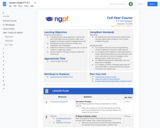
Estimated Lesson Time: 95 Minutes
Students will be able to:
-Understand how down payment, interest rate, term, loan type, and amortization table work together to impact overall mortgage payments
-Recognize the pros and cons of fixed- and adjustable-rate mortgages
-Determine whether a home equity loan or line of credit is a viable loan option
-Decide whether renting or buying makes the most sense
ANSWER KEY LINKS: Create a Next Gen Personal Finance (NGPF) account to access answer keys. They will be listed under the Full Year Curriculum tab.

This resource is a collaborative assessment that takes about five 50-minute class periods (without the presentation time) that can be used after completing the Junior Achievement Economics for Success program. Outcome topics include goals, budgeting, credit, and insurance. Other prior knowledge includes how to create, format, and collaborate using a presentation app (Google Slides). Keep in mind that this project is used in a class that also teaches keyboarding, personal finance, and computer applications. This is part of a unit assessment.
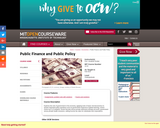
Explores the role of government in the economy, applying tools of basic microeconomics to answer important policy questions such as government response to global warming, school choice by K-12 students, Social Security versus private retirement savings accounts, government versus private health insurance, setting income tax rates for individuals and corporations.